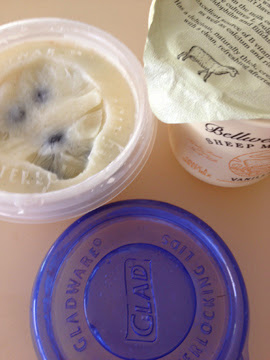Sugar-Free, (Almost) Fat-Free Summer Pops
We're all familiar with the old saw that you want what you can't have. As a food writer with Type 2 diabetes I come across that a lot. And I give in. Sometimes. But usually I try to stick with a healthy diet and daily exercise.
As the weather gets warmer and frozen treats are increasingly more beguiling, I've been trying to figure out a better coping strategy. It's just too frustrating to pick up boxes of fruit popsicles or ices or containers of ice cream, read the labels and see serving sizes with 32 grams of carbohydrates. That, after all, is about as much as I can have in an entire meal, let alone a snack. For people in weight loss mode, it's also the fat in these treats that makes them return the box to the shelf. And don't tell us to just have fruit. Fruit is high in carbs and I can't have that many at a given meal.
Now I'm fully expecting a heaping serving of scorn for touting this, but someone gave me the idea of not only freezing fruit, like bananas, but also freezing instant Jell-o pudding--and I loved it! I mean really loved it.
On a recent weekend afternoon I picked up a small 1.4-ounce box of chocolate fudge sugar free, fat free instant Jell-o pudding at the market. I also bought a four-pack of 1/2 cup plastic containers. At home I had a banana that I chopped into bite-sized pieces. Then I followed the directions on the box, using 1 percent organic milk, which I blended with the powdered mix. I stirred in the banana pieces, then quickly (before it set) poured the mix into the containers, topped them off with the lid and sent them off to the freezer. By evening I tried one. I know it's not culinarily correct (CC?) to admit it, but the result hit the spot. Rich chocolate flavor, creamy banana bites, and all long lasting since it took forever to lick it gone.
 |
| The molds I bought were Tovolo Star Ice Molds--a set of six that fit on a stand for freezing. Each mold holds 3 ounces and the set cost about $12 on Amazon. |
The problem was that it actually irritated my tongue (go for the jokes; I fully expect them). So, I found some sturdy plastic popsicle molds online and bought them. The result was much better. Just remember that you have to run the filled, frozen mold under warm water for a couple of minutes to loosen it from the popsicle. And, instead of filling four, 1/2-cup containers, the small box will fill six popsicle molds (at least this brand). That means one serving is even less carb laden. With the cups, a serving was 8 grams (plus a little more with some pieces of banana and the milk). With the popsicle molds, it's a little more than 5 grams.
This can work with all sorts of ingredients--non-fat yogurt mixed with honey and berries--or a smattering of chocolate chips (You'll probably use all of a tablespoon for one popsicle). I gave it a try with Bellwether Farms vanilla sheeps milk yogurt and fresh, organic blueberries. Try chopped mango, cherries, papaya, peaches--name the summer fruit and you can probably work it in to great effect. If you're carb-challenged this is terrific because you'll get only a fraction of a full serving of fruit in each pop.
So, yes, I get it--I'm advocating packaged foods filled with all sorts of unpronounceable chemicals (actually, it's modified cornstarch, cocoa, salt, soy lecithin, and aspartame, among others). But for someone with dietary limitations who wants to splurge, what the hell... There's no such thing as perfection on a sultry day.
Print Page
























